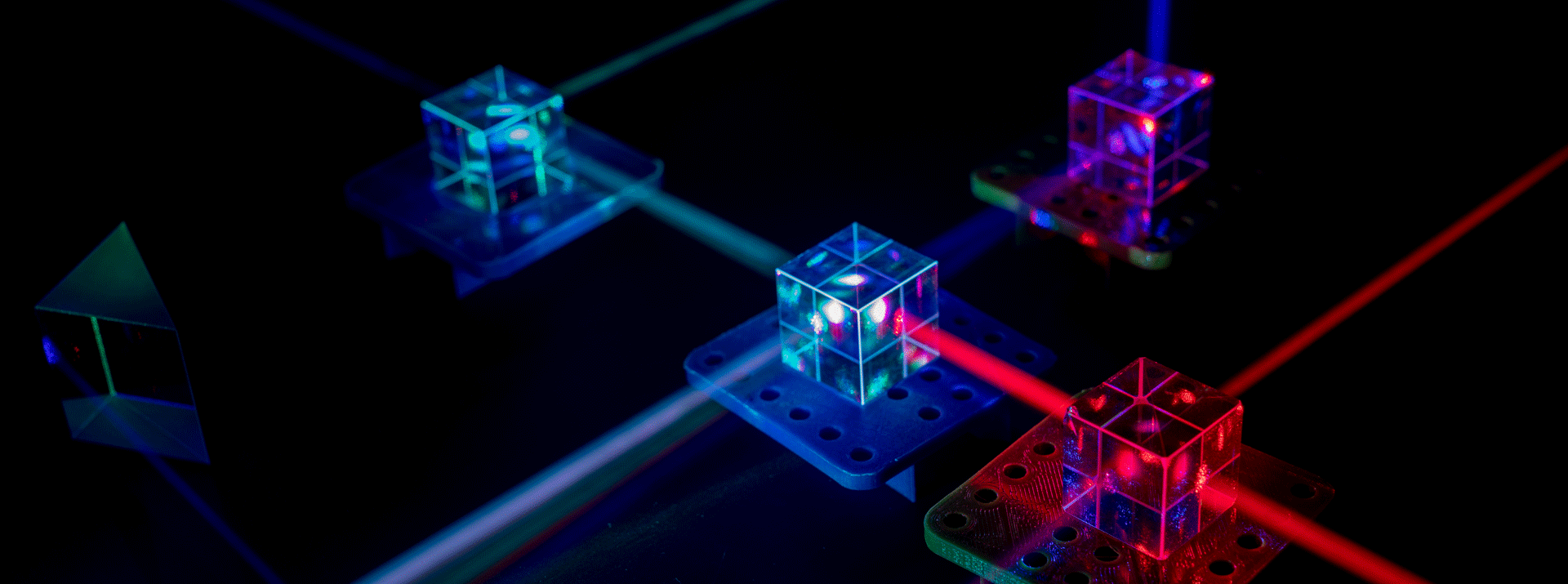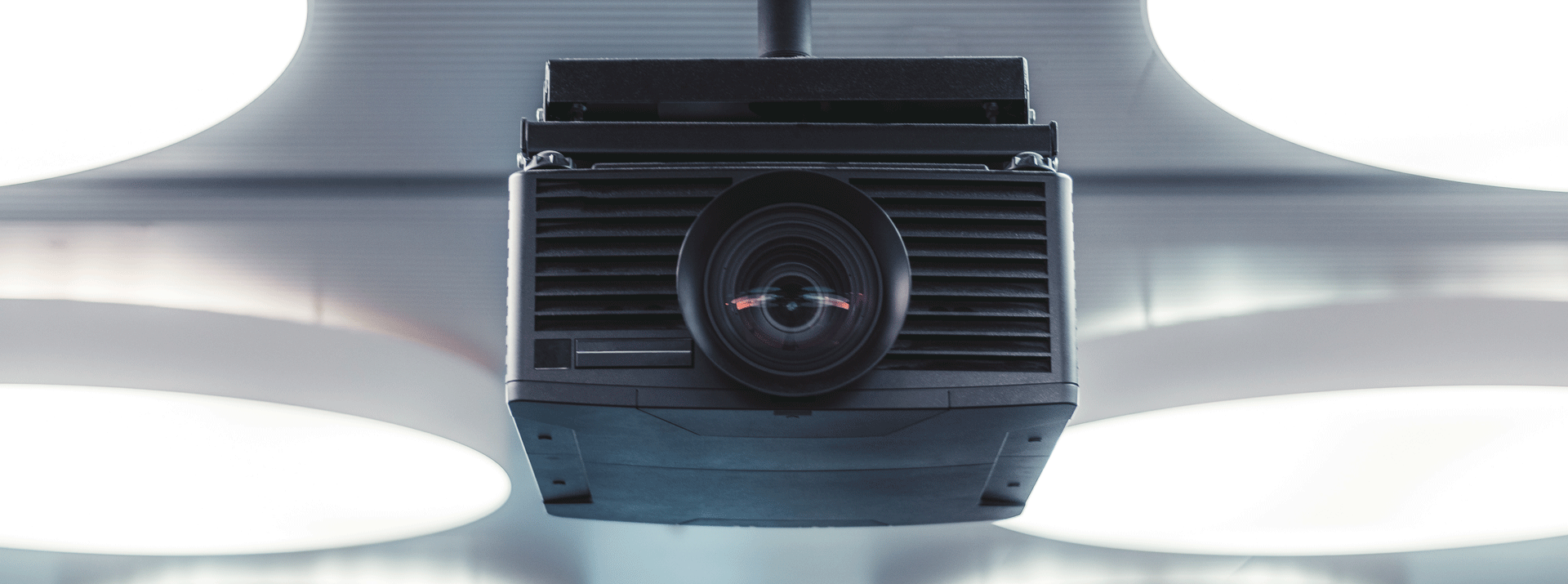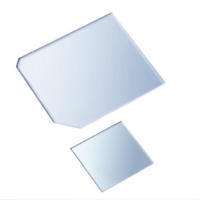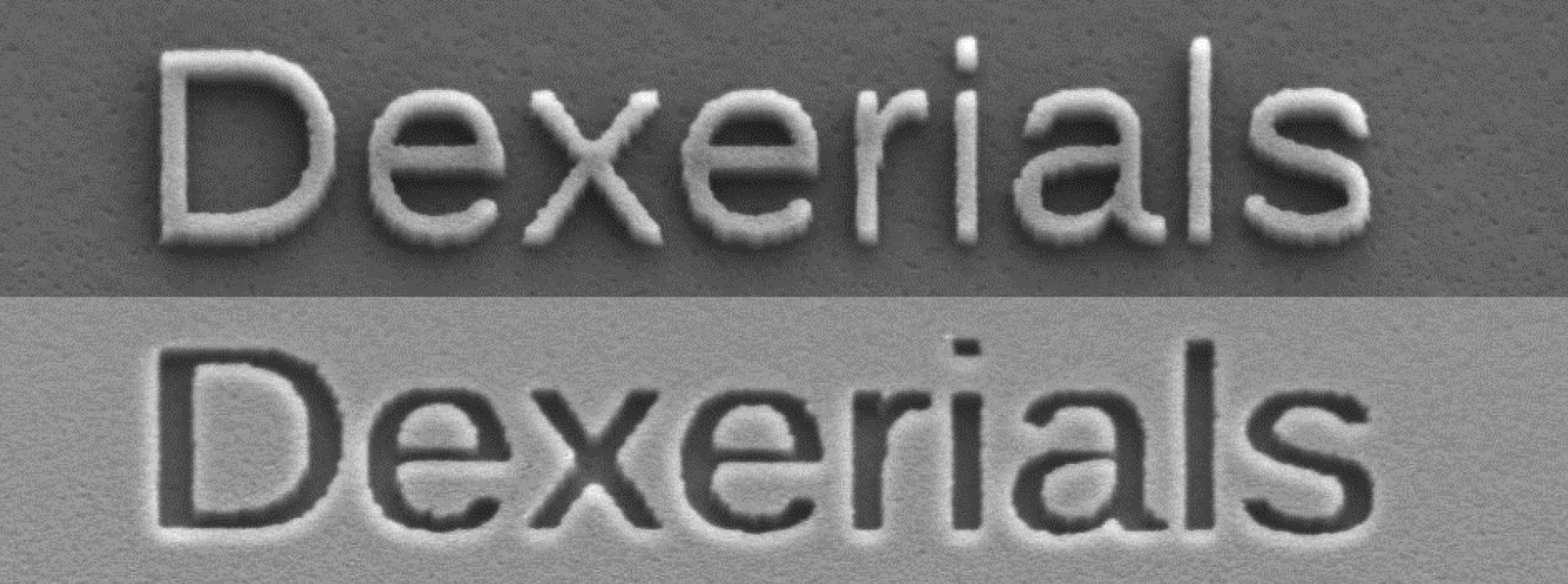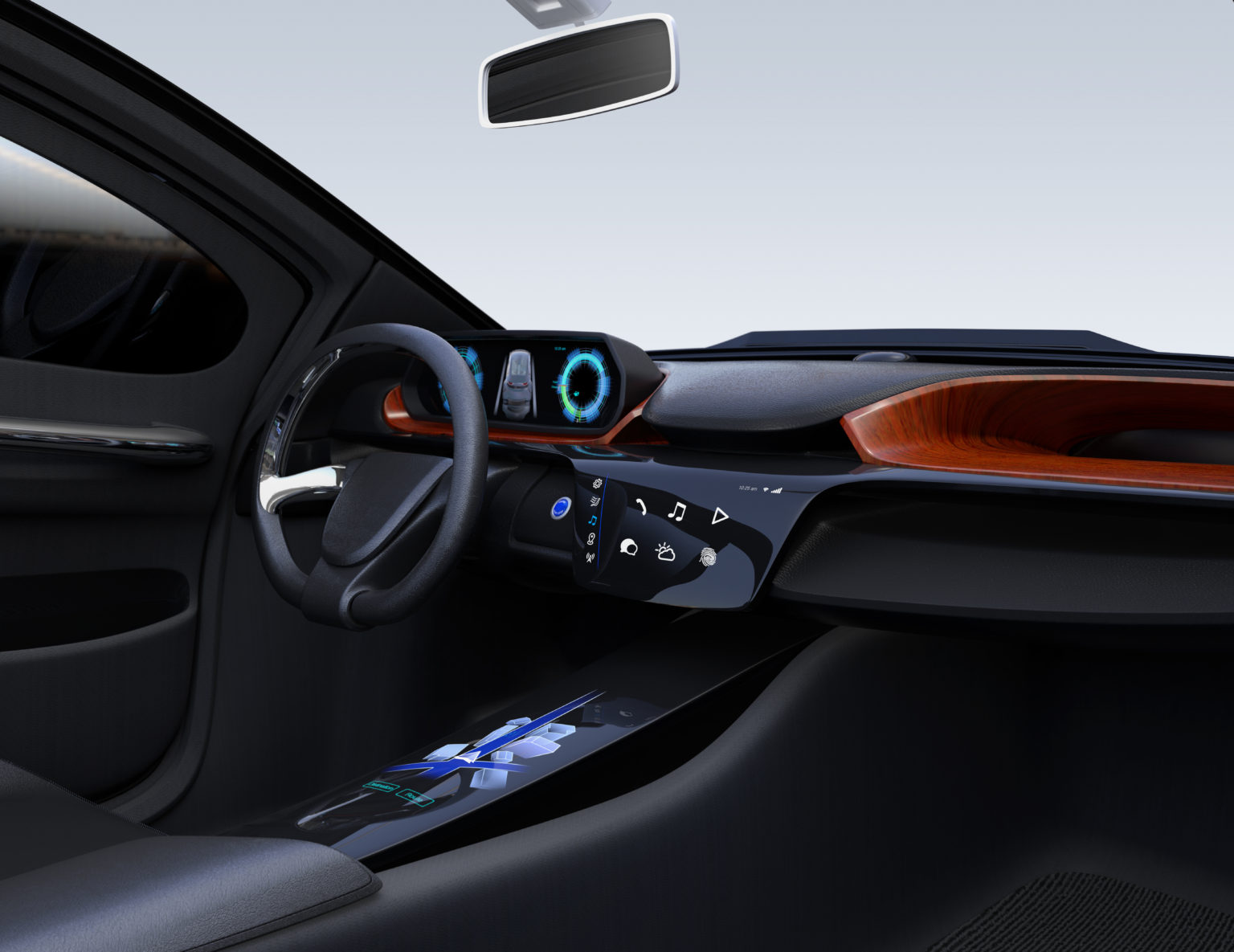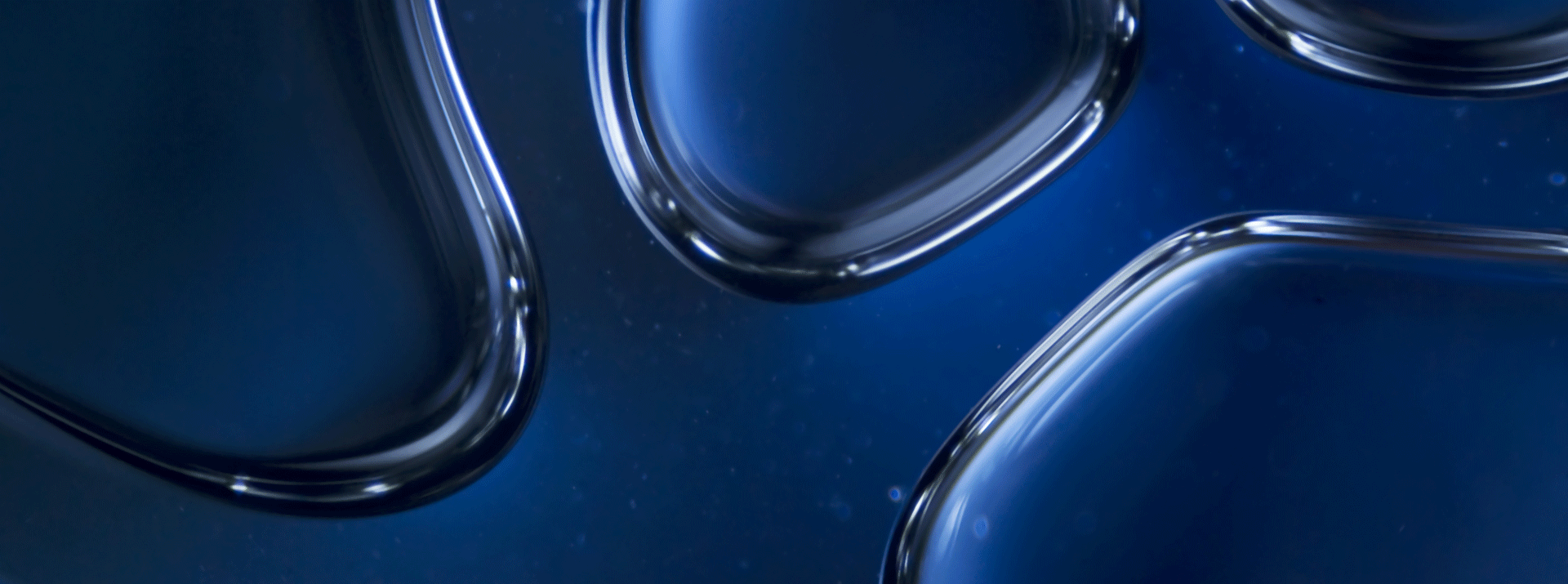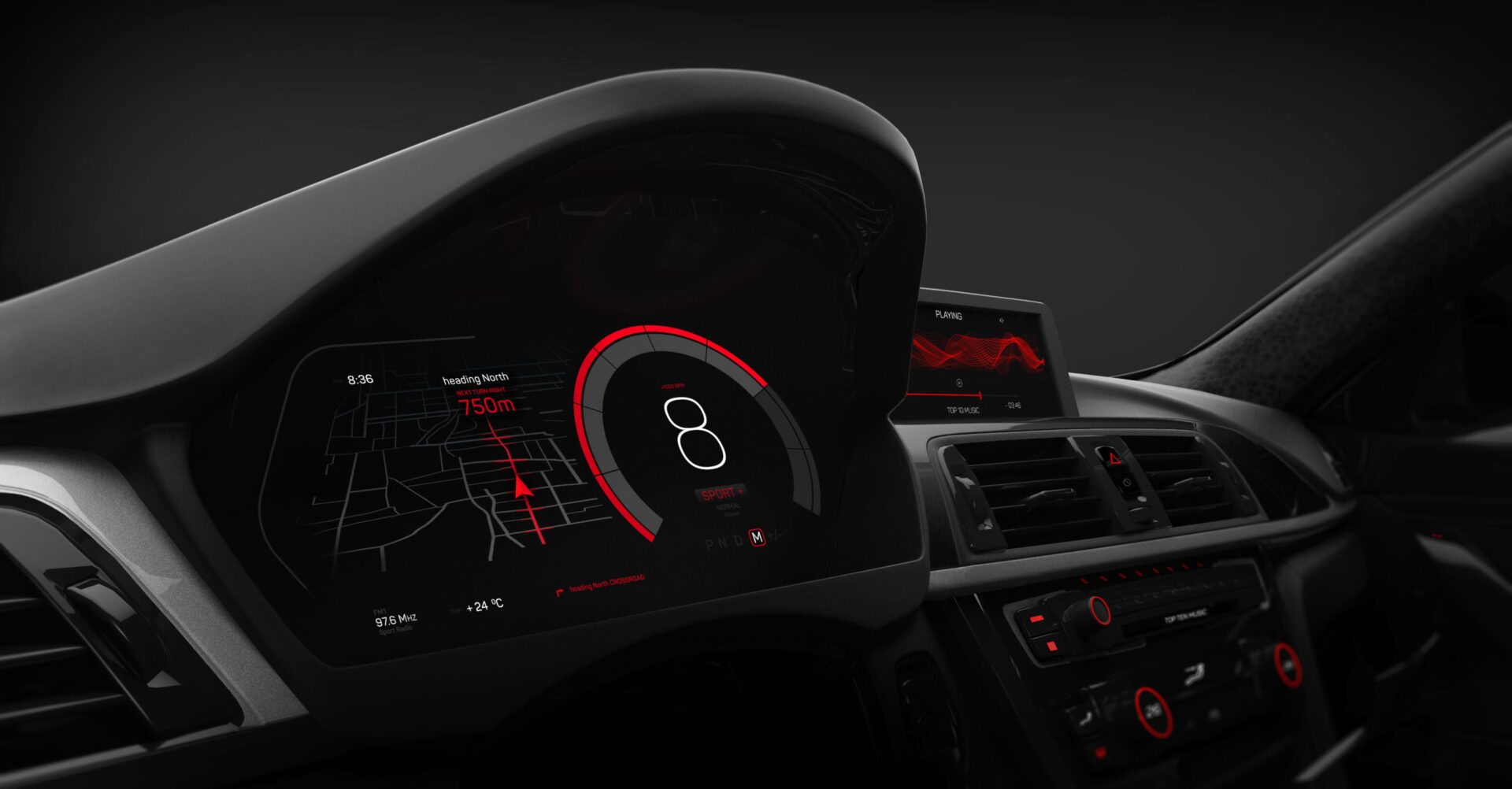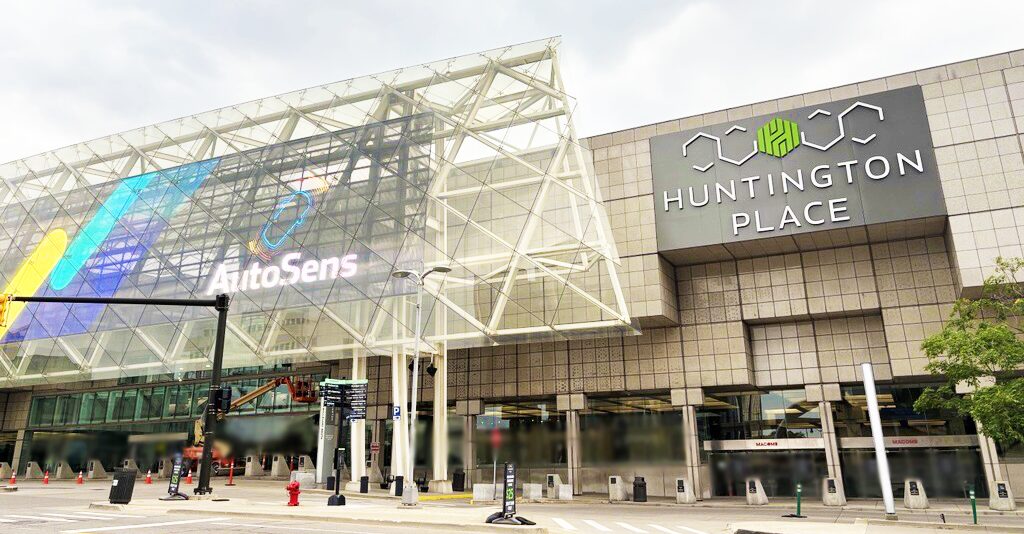
- Optical Products
Inorganic diffusers with microlens arrays
目次
Diffusers help spread out laser light
Dexerials’ inorganic diffusers are mainly used to diffuse laser light in projectors. First, let’s explore their development.
Projectors, which use light to project images on walls, are increasingly being used in various places such as conference rooms and theaters. One of the major technological innovations that has occurred in recent years is the change of light source from mercury lamps to laser lights. Mercury lamps, which emit strong light due to arc discharge, were used as a light source for many years. However, growing awareness of environmental issues has led to increased restrictions on the use of mercury, leading to a decrease in production of mercury lamp projectors.
Today, lasers are increasingly being used as a light source. Laser light is highly directional and does not easily spread. Since the properties of laser light are completely different from those of mercury lamps, which naturally spread out in all directions, it is necessary to diffuse laser light in order to use it as a light source in projectors.
Dexerials’ diffusers allow the laser light to be dispersed according to a pre-designed diffusion angle. Some diffusers are made of organic materials, but since projector diffusers need to withstand strong laser heat for long periods of time, heat-resistant inorganic diffusers are preferred.
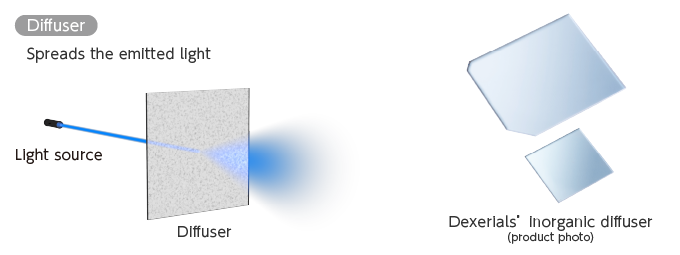
Principles and functions of Dexerials’ inorganic diffusers
The illustration below is a magnified view of the surface of an inorganic diffuser developed by Dexerials. The inorganic diffusers consist of a number of microlenses, which diffuse incoming laser light.
Such structure with arranged microlenses is called “microlens array.” In typical microlens arrays, lenses of the same size and shape are arranged in an orderly fashion at a short distance from each other.
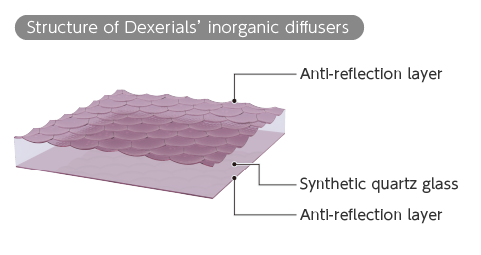
In such arrays, the diffused light intensifies at regular intervals, worsening light distribution.
In contrast, Dexerials applies microfabrication technology making it possible to customize the shape and placement of the lenses to make sure the light does not overlap and the lenses have uniform brightness.
Inorganic diffusers with customizable top-hat light distribution
Another major feature of Dexerials’ inorganic diffusers is its top-hat light distribution. The following graphs show the difference in light distribution between conventional and top-hat diffusers.
A conventional Gaussian diffuser is bright in the center but gets dimmer as it moves to the periphery, while a top-hat diffuser spreads the light evenly over the entire area. The top-hat diffuser got its name because of the shape of the graph showing brightness level at specific diffusion angle.
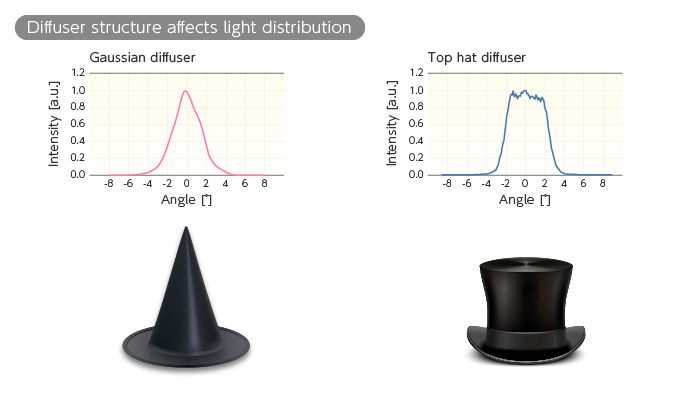
These top-hat diffusers are designed and manufactured by Dexerials using microstructure manufacturing technology. The following graphs show the light distribution and profiles of the various diffusers Dexerials offers.
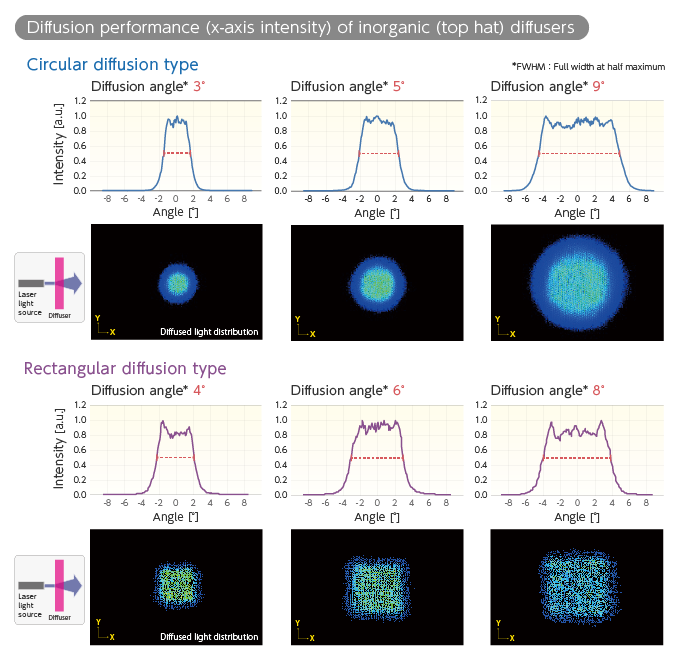
Wide range of Dexerials’ diffusers provide more design freedom for customers. Dexerials is committed to helping customers find the right diffuser for their needs.
Related articles
- SHARE

We provide materials regarding our products and manufacturing technologies.
Feel free to download it for free.
Download Materials
We provide materials regarding our products and manufacturing technologies.
Feel free to download it for free.
Download Materials


